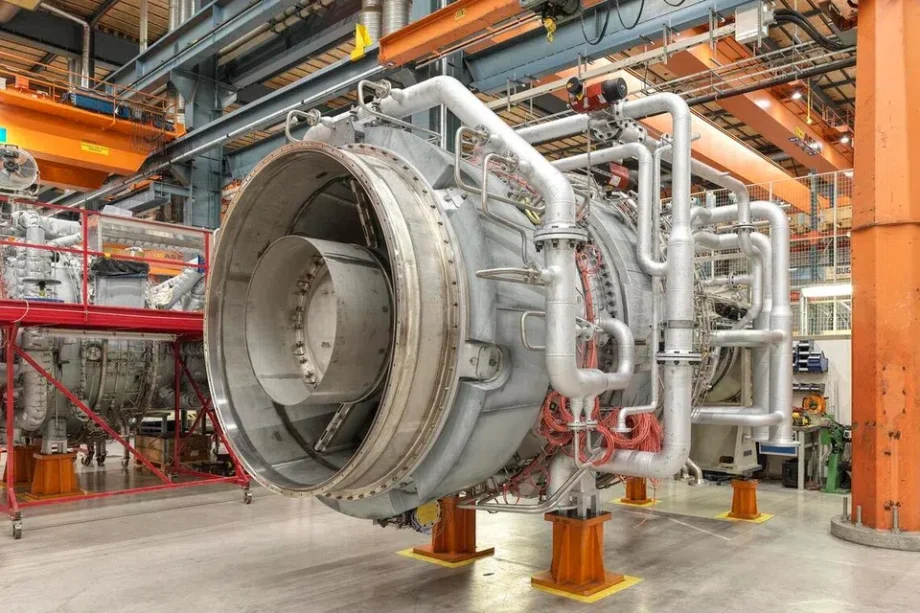The industrial-looking machines lined up on the factory floor in an industrial town in Sweden looked anything but green.
But the lorry-sized turbines at the Siemens Energy factory in Finspang – about a three-hour car ride from Stockholm – are important, yet often invisible, enablers of the world’s transition to a cleaner future.
Dubbed the SGT-800, the 6.2m-long turbine can be used in natural gas-fired power plants to generate electricity.
A gas turbine generates electricity by heating a mixture of air and fuel at very high temperatures, causing the turbine blades to spin. The spinning turbine drives a generator that converts the energy into electricity.
Natural gas is a fossil fuel, the burning of which contributes to climate change as it releases planet-warming carbon dioxide (CO2).
But the unique feature of the SGT-800 gas turbine is its ability to run on cleaner fuels – a blend of natural gas and hydrogen (H2). The turbine is able to take on a fuel mix of up to 75 per cent H2.
H2 is considered a clean fuel as it does not produce any CO2 when burned.
This means that compared with a gas turbine of similar capacity that runs fully on natural gas, the hydrogen-ready SGT-800 gas turbine can reduce CO2 emissions by 47 per cent, said Dr Philipp Geipel, the director for research and development Singapore at Siemens Energy.
Using H2 as fuel in gas turbines that are not hydrogen-ready can lead to unstable combustion and a higher risk of explosions, he told the media during a visit to the German company’s industrial hub in Finspang in September.
This means that compared with a gas turbine of similar capacity that runs fully on natural gas, the hydrogen-ready SGT-800 gas turbine can reduce CO2 emissions by 47 per cent, said Dr Philipp Geipel, the director for research and development Singapore at Siemens Energy.
Using H2 as fuel in gas turbines that are not hydrogen-ready can lead to unstable combustion and a higher risk of explosions, he told the media during a visit to the German company’s industrial hub in Finspang in September.

Siemens Energy state that SGT-800 gas turbines have been sold to Singapore.
Photo: Straits Times
The nascency of H2
While H2 offers much promise as a green fuel, it is not yet used widely globally.
Professor Chan Siew Hwa, co-director at the Energy Research Institute @ NTU, said the main reasons are the high cost of production, storage and transport, the lack of large-scale infrastructure and uncertainty over demand.
H2 is mainly produced by running an electric current through water – a process called electrolysis – to separate it into H2 and oxygen.
For H2 to be truly considered a green fuel, the electricity used to split the water molecule must come from renewable sources like solar energy. But most H2 today is produced from fossil fuels, making it “grey hydrogen”.
Transporting and storing H2 is also challenging.
The fuel exists as a gas at room temperature, and must be cooled to extremely low temperatures of about minus 253 deg C so it can be transported more easily as a liquid.
For context, some Covid-19 mRNA vaccines had to be transported at temperatures ranging from minus 90 deg C to minus 60 deg C, and required specialised cold-chain logistics management.
The combustible nature of H2 is also why special turbines are needed to generate electricity from it.

Photo: Straits Times







